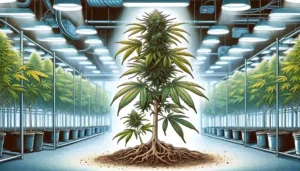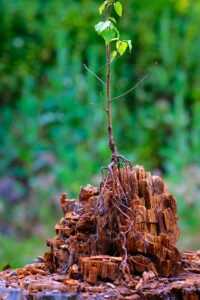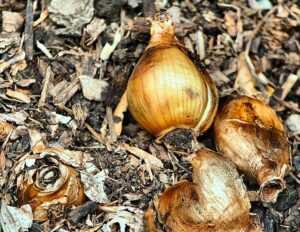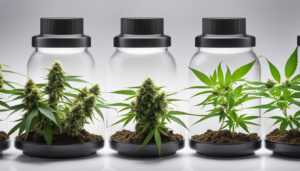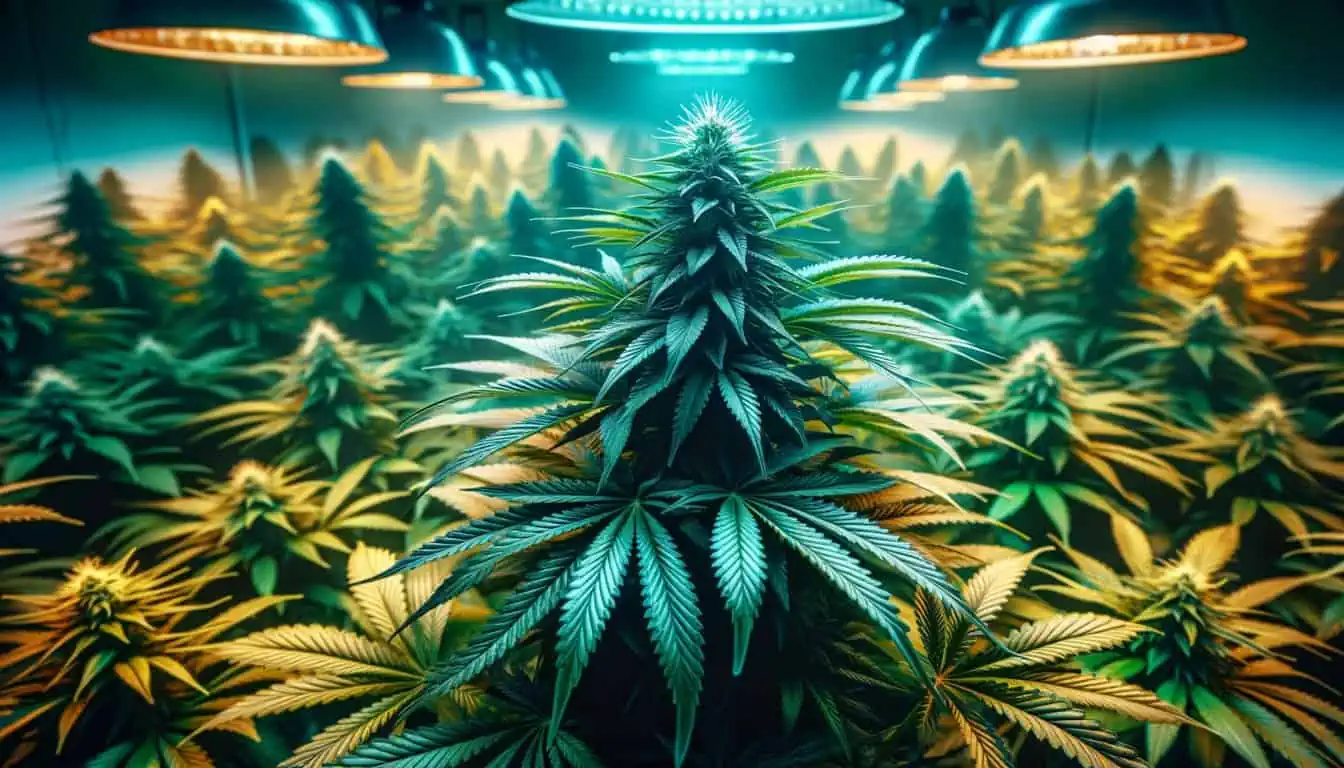Cannabis cultivation is an evolving field, blending science and art. Re-vegging cannabis stands as a key technique in this realm, offering unique opportunities for growers. This guide explores the depths of re-vegging, shedding light on its techniques, benefits, and complexities.
Understanding Re-Vegging Cannabis
Re-vegging, or re-vegetating, is a critical technique in cannabis cultivation, involving a transition of a flowering cannabis plant back into the vegetative stage. This unique process opens the door to multiple harvests from a single plant and plays a significant role in preserving the genetics of plants with desirable characteristics. It’s not just a technique but a strategic approach that requires a deep understanding of the cannabis plant’s life cycle and an ability to manipulate key environmental factors to achieve the desired outcome.
At its core, re-vegging is about understanding the delicate balance of a cannabis plant’s life cycle. Typically, a cannabis plant goes through two main stages: the vegetative stage, where it focuses on growing in size and strength, and the flowering stage, where it develops buds. Re-vegging interrupts this natural progression, taking a plant that has started or even completed its flowering stage and reverting it to the vegetative stage. This process is akin to turning back the clock on the plant’s development, giving it a chance to grow afresh.
The key to successful re-vegging lies in manipulating environmental factors, primarily the light cycle. Cannabis plants in the vegetative stage require long periods of light (usually around 18 hours a day) to grow and develop. By adjusting the light cycle to mimic these conditions, cultivators can trick a flowering plant into returning to its vegetative growth phase. This manipulation of light not only halts the flowering process but also encourages the plant to resume vegetative growth, developing new leaves and branches.
Additionally, re-vegging involves more than just adjusting the light cycle. Temperature, humidity, and nutrition also play crucial roles in the re-vegging process. The plant’s environment needs to be carefully controlled to provide optimal conditions for re-vegetation. For instance, nitrogen-rich fertilizers are often used during this stage to promote the growth of new foliage, as the nutritional needs of the plant shift from flowering back to vegetative growth.
Understanding the nuances of re-vegging Cannabis is also about recognizing the signs of success and knowing how to respond to the plant’s needs. Plants undergoing re-vegging may exhibit unique characteristics, such as unusual leaf patterns or growth structures. These signs indicate that the plant is adapting to the changes in its environment and entering a new growth phase.
In essence, re-vegging is a complex dance of understanding and manipulating the cannabis plant’s natural growth cycle. It requires patience, precision, and a deep respect for the plant’s biological processes. By mastering re-vegging, cultivators can not only extend the productive life of their cannabis plants but also explore new possibilities in cannabis cultivation, from enhancing yield to preserving and propagating prized genetic traits.
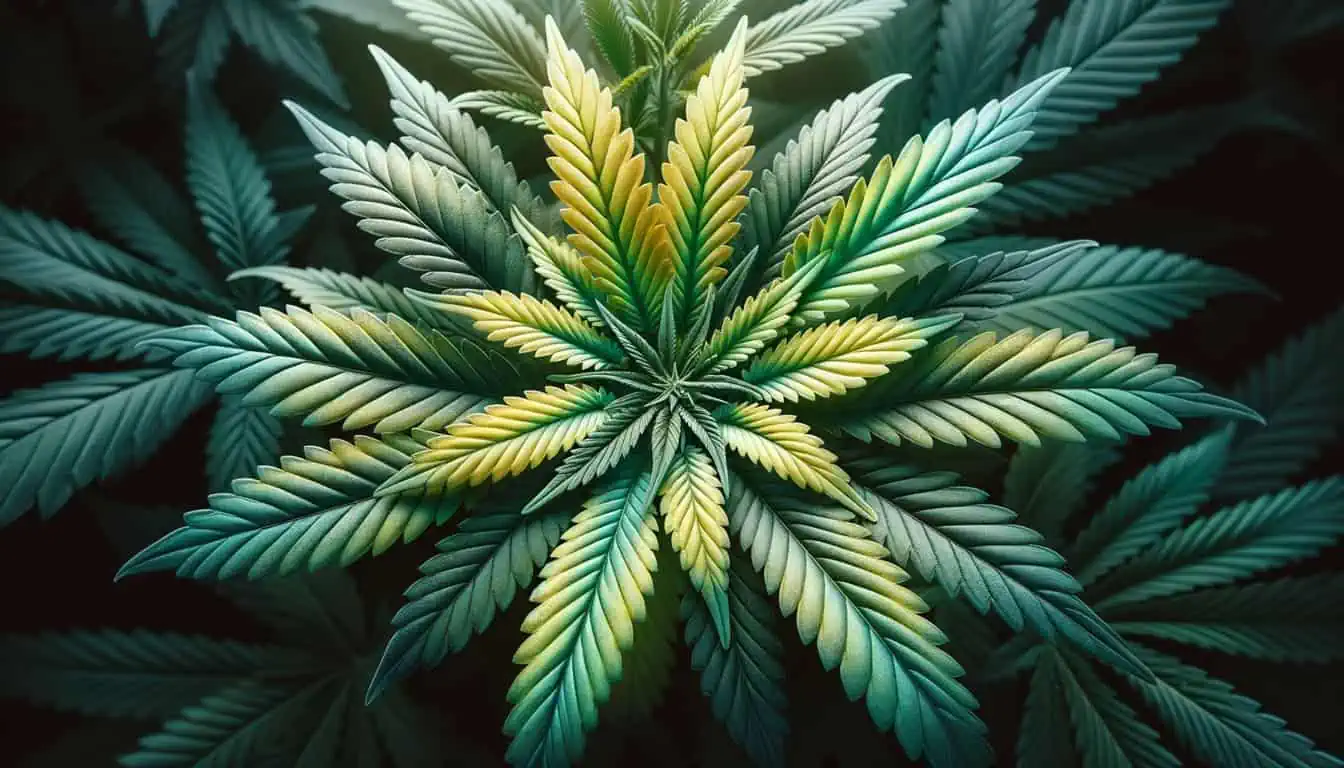
The Process of Re-Vegging Cannabis
The re-vegging process in cannabis cultivation is a meticulous and deliberate practice that hinges on achieving the right balance of light, nutrition, and observation. This process is initiated by altering the plant’s light cycle, a fundamental trigger for the plant’s growth stages. In the natural vegetative stage, cannabis plants are exposed to long periods of light, typically around 18 hours per day. To mimic these conditions and induce re-vegging cannabis, cultivators adjust the light cycle, ensuring prolonged daylight hours. This extended exposure to light is critical in signaling to the plant that it should return to its vegetative growth phase.
Nutrient management takes on a heightened significance during cannabis re-vegging. As the plant transitions from flowering back to vegetative growth, its nutritional requirements shift. The focus moves towards promoting the development of new foliage, necessitating an increased supply of nitrogen. Nitrogen is a key component in chlorophyll, which plants use in photosynthesis, and it plays a vital role in the growth of new leaves and stems. Therefore, during re-vegging, the use of nitrogen-rich fertilizers is crucial. These fertilizers support renewed vegetative growth, helping the plant to develop robust new foliage and stems.
In addition to adjusting the light cycle and managing nutrition, careful observation is paramount in the re-vegging process. One must watch for specific signs that indicate the plant is successfully reverting to its vegetative state. These signs include the emergence of new growth patterns and changes in leaf morphology. Typically, cannabis plants in the vegetative stage develop serrated leaves. However, during re-vegging, the new leaves may have a distinct appearance – they might be rounder or have single-point shapes. These morphological changes are tell-tale signs that the plant is responding to the altered environmental conditions and is beginning to re-veg.
Observing these changes requires a keen eye and an understanding of normal cannabis plant growth patterns. The new growth may appear atypical or even unhealthy at first glance, but it is a normal part of the re-vegging cannabis process. The plant is essentially readjusting its growth mechanisms in response to the changed conditions.
Furthermore, the re-vegging process is not uniform across all cannabis plants. Different strains and individual plants may respond differently to re-vegging techniques. This variability makes it crucial for cultivators to monitor each plant closely and adjust their care strategies accordingly.

Exploring Re-Vegging Techniques of Cannabis
Cannabis Re-vegging, a versatile and innovative aspect of cannabis cultivation, encompasses various techniques, each with its own set of unique challenges and advantages. Understanding and mastering these techniques allows growers to enhance their cultivation strategies and maximize the potential of their cannabis plants.
- Monster Cropping: A standout method in the realm of re-vegging cannabis is monster cropping. This technique involves taking clones from cannabis plants that are already in the flowering stage and reverting them to vegetative growth. The primary advantage of monster cropping lies in the robustness and vigor of the growth it promotes. Plants that undergo monster cropping typically exhibit more branching, leading to denser and more abundant buds in subsequent flowering cycles. This method is particularly beneficial for growers looking to maximize their yield without starting from seeds. However, monster cropping requires precision and care. The clones taken from flowering plants are often more delicate and require specific environmental conditions to successfully revert to the vegetative stage. Adequate humidity, controlled temperatures, and gentle lighting are essential to nurture these clones until they establish a solid vegetative growth pattern.
- Accidental Re-Vegging: While monster cropping is a deliberate and planned technique, accidental re-vegging represents an unplanned entry into re-vegetative growth. This phenomenon usually occurs due to unintended changes in the plant’s environment, such as light leaks or disruptions in the light cycle, especially during the critical flowering stage. Accidental re-vegging can be seen as a setback or a unique learning opportunity, depending on the grower’s perspective and goals. It provides a real-life scenario for understanding the resilience and adaptability of cannabis plants. For instance, a plant that accidentally re-vegges due to a light leak offers insights into the light sensitivity of the species and the importance of maintaining a strict light regimen. Growers can learn from these incidents to improve their cultivation practices, making their operations more resilient to such errors in the future.
- Controlled Re-Vegging: Beyond monster cropping and accidental re-vegging of cannabis, there’s the method of controlled re-vegging. This technique involves deliberately altering the light cycle and environment of flowering plants to return them to the vegetative stage. Controlled re-vegging is often used for genetic preservation or when a particular plant exhibits desirable traits that the grower wishes to continue developing. This method requires a deep understanding of the plant’s response to environmental changes and precise adjustments to the growing conditions.
- Re-Vegging for Genetic Preservation: In some cases, re-vegging is employed specifically for the purpose of preserving the genetics of a particularly valuable plant. This technique allows growers to continue cultivating a specific phenotype that has demonstrated desirable traits, such as high yield, particular cannabinoid profiles, or resistance to pests and diseases. Re-vegging for genetic preservation might involve cloning techniques or controlled stress to encourage the plant back into vegetative growth.
Each re-vegging technique comes with its own set of challenges and rewards. Whether it’s maximizing yield through monster cropping, learning from accidental re-vegging, meticulously controlling environmental factors, or preserving valuable genetics, these methods offer cannabis growers diverse ways to enhance their cultivation practices. Understanding and mastering these techniques can lead to more successful harvests and a deeper appreciation of the complexities of cannabis plant growth.
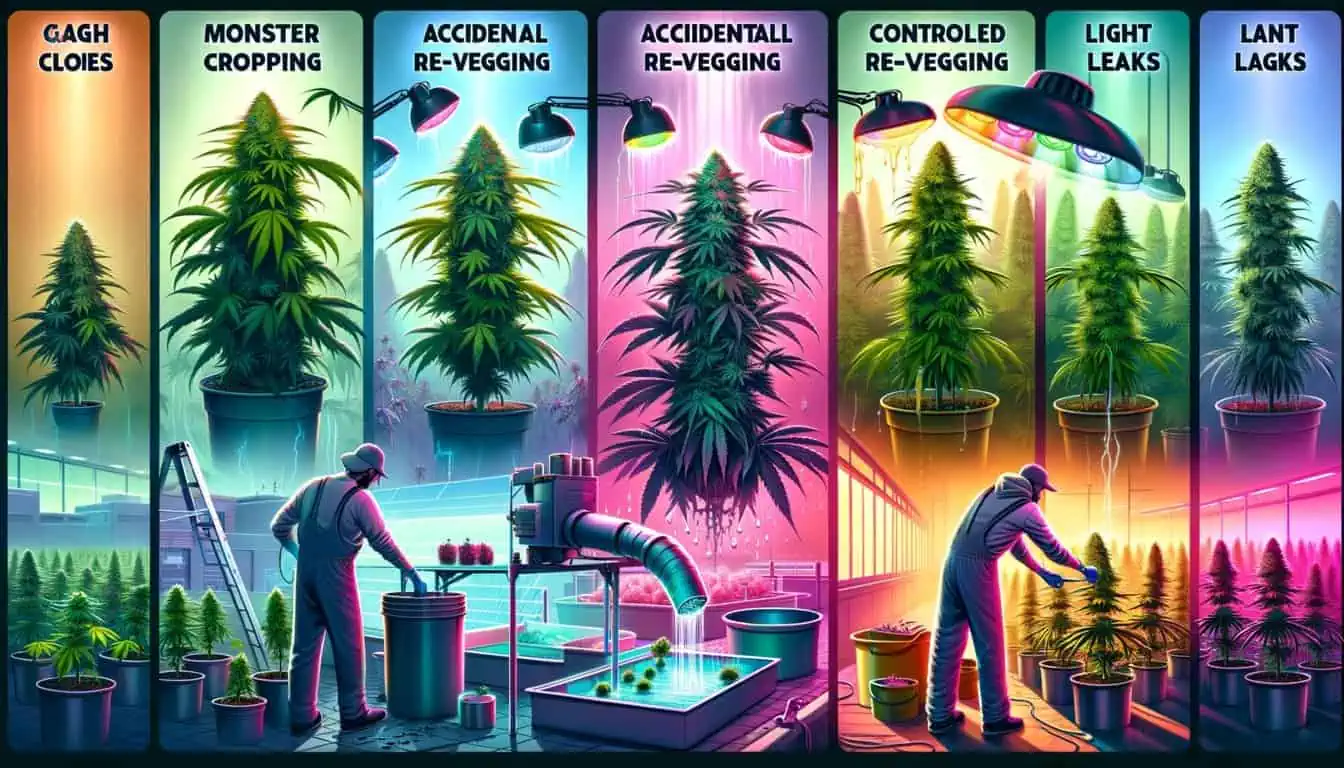
Benefits and Challenges of Re-Vegging
The practice of re-vegging in cannabis cultivation brings with it a unique set of benefits and challenges that can significantly impact the outcome of the harvest. Understanding these can help cultivators make informed decisions and effectively manage their cultivation process.
Benefits of Re-Vegging
Multiple Harvests from a Single Plant: One of the most compelling advantages of re-vegging is the ability to obtain multiple harvests from a single cannabis plant. This aspect is particularly beneficial in terms of resource efficiency. Instead of starting a new plant from seed or clone for each growing cycle, growers can maximize the yield from a single plant over several cycles.
- Preservation of Specific Genetics: Re-vegging is invaluable for preserving the genetics of cannabis plants with desirable traits. This could include aspects like potency, flavor profile, growth patterns, or resistance to pests and diseases. By re-vegging a plant with these traits, growers can continue to cultivate and refine these genetics, ensuring the continuity of quality characteristics in their crops.
- Cost Efficiency: Re-vegging can be more cost-effective compared to starting new plants from seeds or clones. It reduces the need for new genetic material and can minimize expenses related to the initial stages of plant growth.
- Environmentally Friendly: This practice can also be seen as more environmentally friendly, as it reduces waste and makes more efficient use of resources. By extending the life of a plant, growers minimize their environmental footprint.
Challenges of Re-Vegging
Time and Effort: The re-vegging process is time-intensive and requires careful management. It demands close attention to the plant’s light exposure, nutritional needs, and overall health. The process also takes time, as it can be several weeks before a plant successfully returns to the vegetative state and begins to show new growth.
- Variable Plant Response: Not all cannabis plants respond equally to re-vegging. Some plants may struggle to revert to the vegetative state, leading to stress and potentially lower yields in subsequent harvests. The success of re-vegging can depend on various factors, including the strain of the plant, its health before re-vegging, and the growing conditions.
- Risk of Plant Stress and Disease: Re-vegging can place stress on plants, making them more susceptible to diseases and pests. Stressed plants often have weakened immune systems, which can lead to a host of cultivation challenges.
- Complexity for New Growers: For novice growers, re-vegging can be a complex and daunting task. It requires a solid understanding of cannabis cultivation and the ability to accurately manipulate growing conditions. Without this knowledge and experience, re-vegging attempts may lead to suboptimal results.
Successful re-vegging requires a balance of careful planning, attentive care, and the ability to adapt to the plant’s responses throughout the process. Understanding these benefits and challenges is crucial for any grower considering re-vegging as a part of their cannabis cultivation strategy.
Detailed Exploration of Techniques
Monster Cropping
Monster cropping is a sophisticated re-vegging cannabis technique that combines cloning and re-vegetating processes to create vigorous and high-yielding cannabis plants.
- Optimal Timing for Cloning: The timing of cloning in monster cropping is critical. The best time to take clones for monster cropping is during the flowering stage, typically a few weeks after the plants have started developing buds. This phase is crucial as the plant exhibits different hormonal balances that can influence the growth patterns of the clones.
- Ideal Conditions for Cloning: Clones taken during the flowering stage require specific conditions to revert back to vegetative growth successfully. This includes maintaining a controlled environment with appropriate humidity levels to prevent the clones from drying out. The lighting should be gentle initially, using fluorescent or LED lights to avoid stressing the young clones.
- Care for Clones: Caring for monster-cropped clones involves a delicate balance of watering and nutrition. Since these clones are taken from flowering plants, they initially require lower nutrient levels, gradually increasing as they establish in the vegetative stage. Regular monitoring for signs of stress or disease is crucial during this transition period.
- Challenges and Solutions: One of the main challenges with monster cropping is the potential for slower initial growth and the need for careful environmental control. Solutions include using rooting hormones to encourage root development and maintaining a stable environment to support the transition of clones.
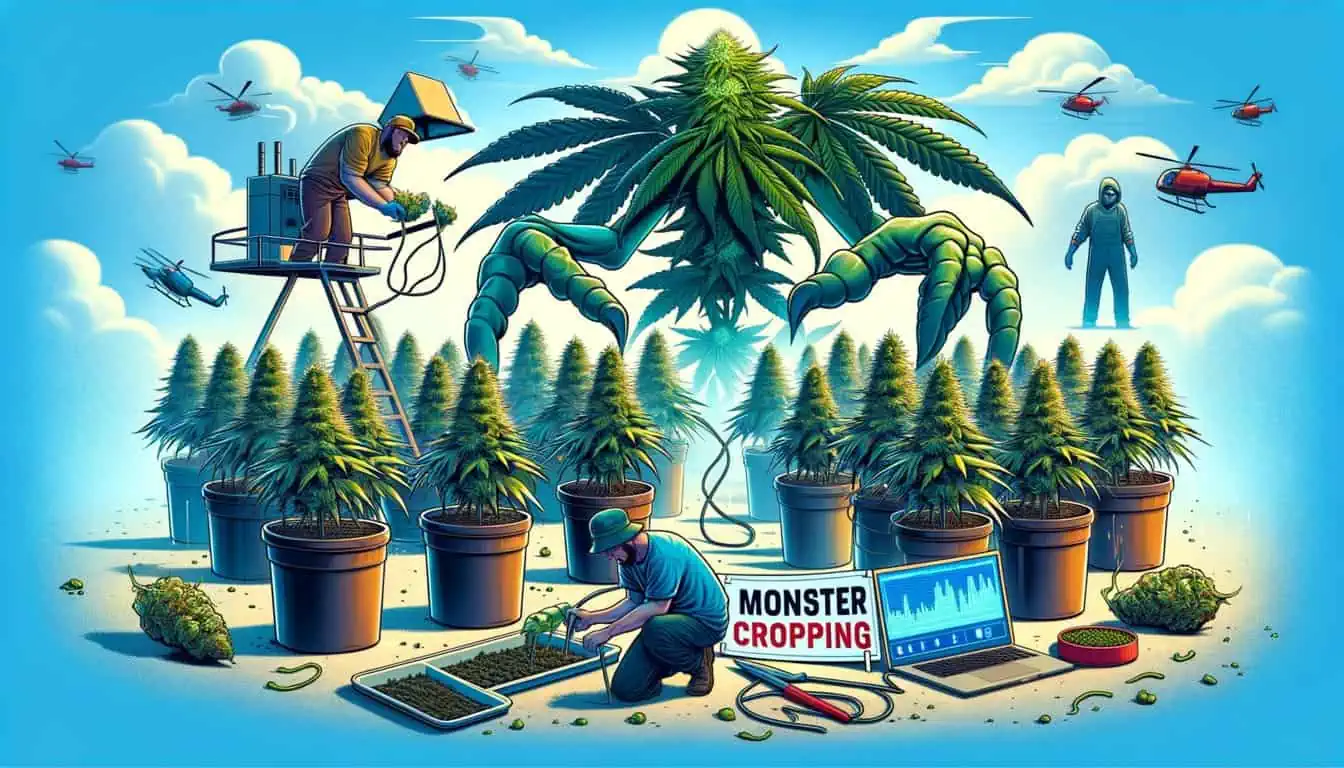
Accidental Re-Vegging
Accidental re-vegging occurs when a flowering plant unexpectedly returns to the vegetative stage, often due to environmental disruptions.
- Identifying Accidental Re-Vegging: Recognizing accidental re-vegging cannabis involves observing signs such as the cessation of bud development and the emergence of new, vegetative growth. This usually happens due to changes in the light cycle or light leaks in the growing environment.
- Strategies for Management: When accidental re-vegging cannabis occurs, the primary strategy is to decide whether to continue with the re-vegging process or to correct the environmental factors and return the plant to flowering. If continuing with re-vegging, the grower must adjust the light cycle to mimic vegetative conditions and monitor the plant closely for any stress signs.
- Case Studies: Various case studies demonstrate successful management of accidental re-vegging. For example, a grower might experience a power outage leading to extended light exposure, triggering re-vegging. In such a case, the grower may choose to continue with re-vegging, adjusting their care regimen to support the plant’s new growth phase, resulting in a successful second harvest.
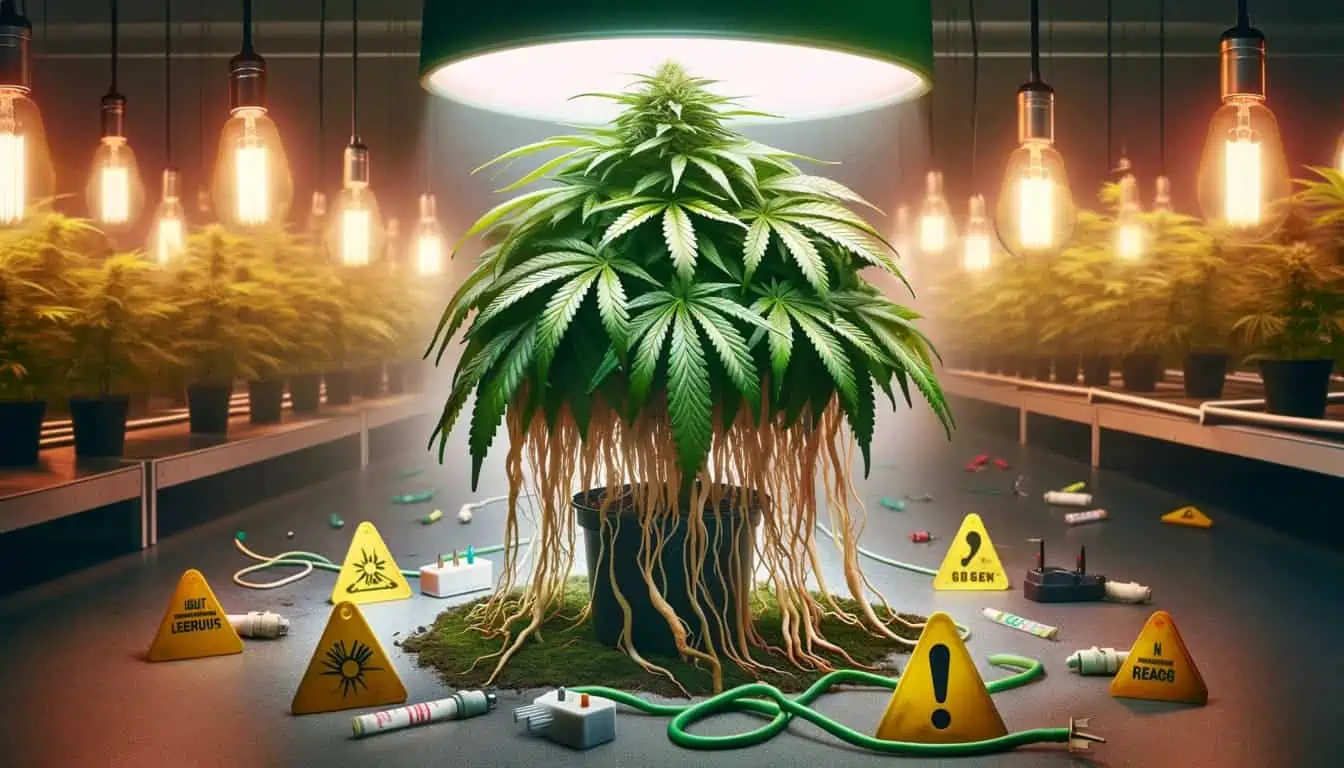
Both monster cropping and accidental re-vegging are intricate techniques within the realm of cannabis cultivation, each with unique challenges and requirements. Understanding these methods and their nuances is essential for any grower looking to experiment with advanced cultivation techniques and optimize their harvests.
Nutrient Management and Environmental Control
The success of re-vegging cannabis plants hinges not only on the manipulation of light but also on meticulous nutrient management and environmental control. Both aspects are critical in creating an optimal setting that supports the plant’s return to and thriving in the vegetative stage.
Nutrient Management during Re-Vegging
- Types of Nutrients Required: During the re-vegging process, the nutritional needs of cannabis plants shift significantly. In the vegetative stage, plants require a higher concentration of nitrogen, which is essential for the growth of leaves and stems.
- A balanced supply of phosphorus and potassium is also necessary to support overall plant health and root development. Additionally, micronutrients such as calcium, magnesium, and iron play crucial roles in maintaining the plant’s physiological processes.
- Appropriate Feeding Schedules: The transition from flowering back to vegetative growth necessitates a change in feeding schedules. Initially, as the plant adjusts to the vegetative stage, a gradual increase in nitrogen-rich fertilizers is recommended. This helps avoid nutrient shock, which can stress the plant. As the plant establishes in the vegetative phase, a more regular feeding schedule can be resumed, tailored to the specific needs and growth rate of the plant.
- Common Nutrient Issues: Nutrient burn and deficiency are common issues during re-vegging. Nutrient burn, characterized by the yellowing or browning of leaf tips, occurs when the plant is overfed, particularly with nitrogen. On the other hand, nutrient deficiency, often indicated by yellowing leaves and stunted growth, arises when the plant does not receive enough of the necessary nutrients. Monitoring the plant’s response to feeding and adjusting the nutrient mix and schedule accordingly is essential to avoid these issues.
Environmental Control during Re-Vegging
- Temperature and Humidity: The ideal temperature and humidity levels are crucial for successful re-vegging. Cannabis plants in the vegetative stage prefer a temperature range of about 70-85°F (21-29°C) during the day and slightly cooler temperatures at night. Humidity levels should be maintained around 40-60%, supporting healthy leaf growth and preventing issues like mold or mildew.
- Air Circulation: Proper air circulation is vital in a re-vegging setup. Good airflow strengthens the plant stems and helps maintain a consistent environment, reducing the risk of pest infestations and fungal diseases. Using fans and ensuring that the growing area is not overcrowded can help achieve effective air circulation.
- Different Growing Setups: The principles of nutrient management and environmental control apply across various growing setups, from indoor grow rooms to greenhouses. In indoor setups, growers have more control over environmental factors, using tools like climate controllers, humidifiers, and grow lights. In contrast, greenhouse growers must often work with and adjust to external environmental conditions, making use of ventilation systems and shade cloths.
Creating and maintaining the ideal environment for re-veged plants involves a holistic approach, considering both nutrient management and environmental factors. By carefully balancing these elements, growers can ensure that their cannabis plants not only survive the re-vegging process but also thrive, leading to healthy growth and abundant yields in subsequent vegetative and flowering cycles.
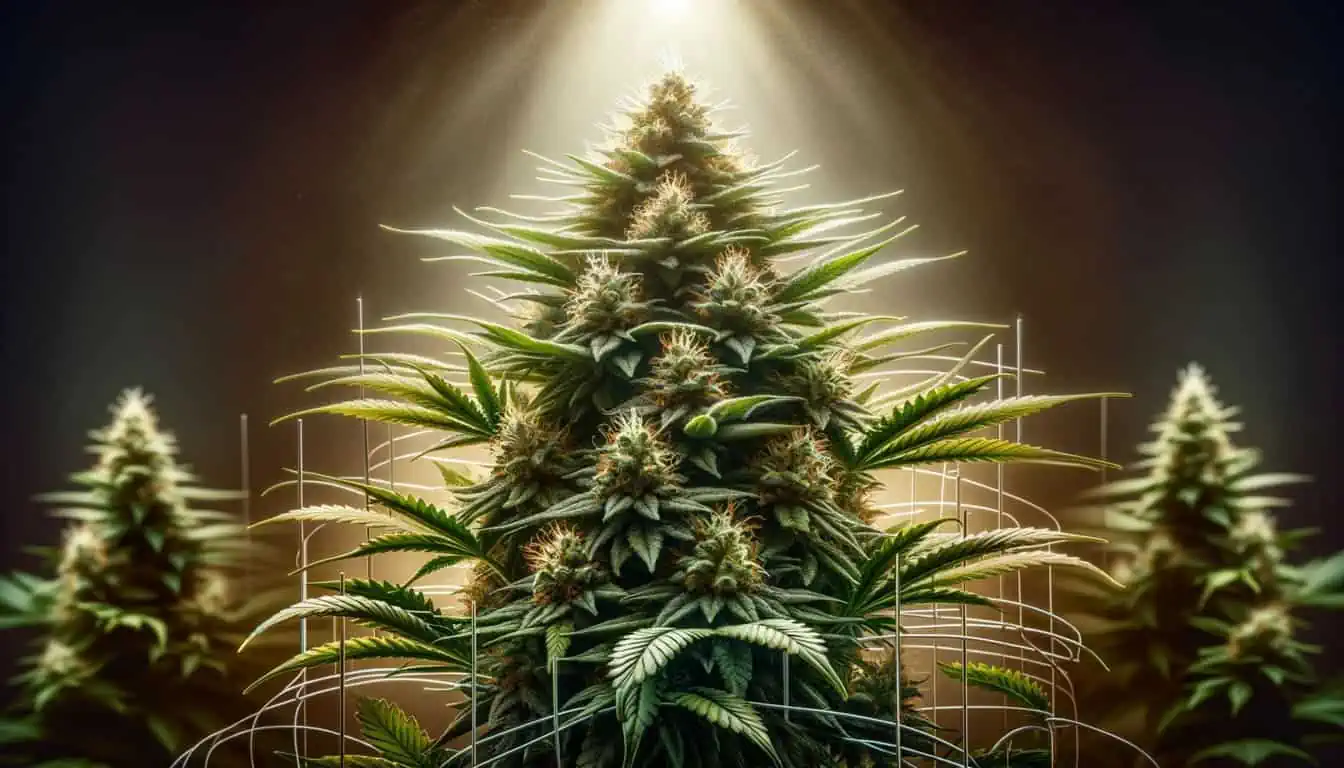
Advanced Grower Insights
The world of cannabis cultivation is deeply enriched by the experiences and insights of seasoned growers. Their journey through the intricacies of re-vegging cannabis offers a wealth of knowledge, particularly in the form of practical advice and lived experiences. Understanding these insights, complemented by detailed case studies of successful re-vegging scenarios, provides a comprehensive view of the various methods and outcomes.
Learning from the Experts
Interviews with veteran cannabis growers reveal a treasure trove of information, where each cultivator’s story is a lesson in itself. These experts, having navigated the complex paths of re-vegging, share a range of experiences from the best practices in monster cropping to innovative ways of handling re-vegging cannabis challenges. Their narratives often touch on the subtleties of recognizing the early signs of successful re-vegging cannabis, adapting nutrient regimes for optimal growth, and strategies to mitigate plant stress.
Real-Life Experiences and Anecdotes
The real-world experiences of these growers are invaluable. They provide a practical context to the theory of re-vegging, making it more relatable and easier to understand. Their stories of successes and failures in re-vegging cannabis offer a candid look at what the process truly entails. These anecdotes often include instances of unexpected challenges and the creative solutions employed to overcome them.
Strain-Specific Insights
Experienced cultivators often have extensive knowledge about specific cannabis strains and how they respond to re-vegging cannabis. This information is particularly useful for growers focusing on certain strains. These insights include detailed advice on aspects such as ideal light schedules, nutrient mixes, and the specific environmental conditions preferred by different strains during the re-vegging process.
Innovative Techniques and Adaptations
Seasoned growers also shed light on their innovative approaches to re-vegging cannabis. This includes developing unique techniques tailored to their specific cultivation environments or experimenting with new methods to improve efficiency and yield. Their willingness to experiment and adapt offers a glimpse into the evolving nature of cannabis cultivation.
Case Studies of Successful Re-Vegging Cannabis
Complementing these interviews are detailed case studies that showcase successful re-vegging cannabis scenarios. Each case study is a narrative of its own, illustrating the methods used, the challenges encountered, and the outcomes achieved. These case studies provide tangible examples of how different techniques work in practice, offering insights into the variables that can influence the success of re-vegging, such as environmental conditions, plant health before re-vegging, and the grower’s level of expertise.
Synthesis of Theory and Practice
By synthesizing the theoretical aspects of re-vegging cannabis with practical insights from experienced cultivators, a more holistic understanding of the process emerges. This synthesis allows for a deeper appreciation of the complexities involved in re-vegging and equips aspiring and current growers with the knowledge and confidence to apply these techniques in their cultivation practices.
In conclusion, the advanced grower insights, enriched by personal experiences and case studies, offer a comprehensive and nuanced perspective on re-vegging cannabis. This knowledge is not just instructional but inspirational, encouraging innovation and excellence in the field of cannabis cultivation.
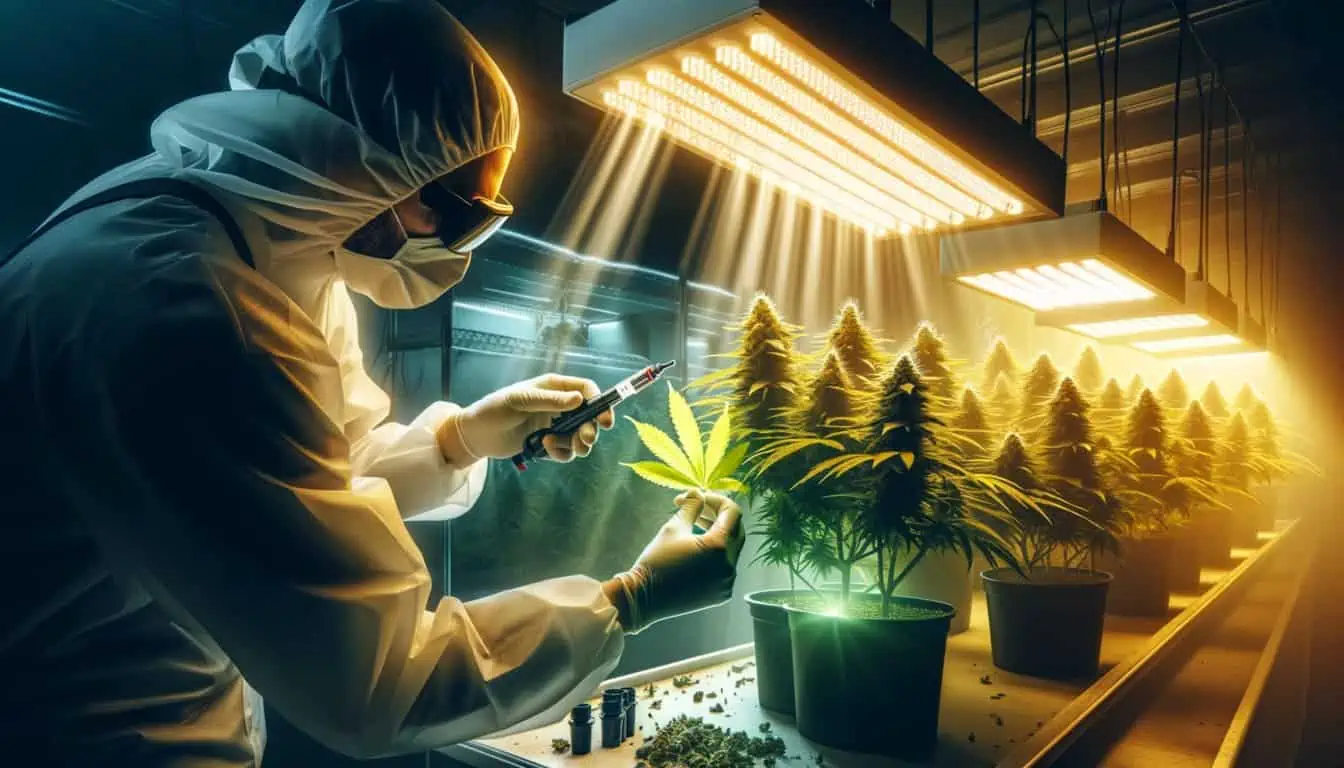
Troubleshooting Common Re-Vegging Issues
The process of re-vegging cannabis plants, while offering numerous benefits, can sometimes be fraught with challenges. Understanding these common issues and knowing how to address them effectively is crucial for the success of re-vegging. Below, we explore some of the typical problems encountered during re-vegging cannabis, along with solutions and preventative measures, enriched by the wisdom of experienced growers.
Stunted Growth
One of the most common issues during re-vegging cannabis is stunted growth. This can occur due to various factors, such as inadequate light, improper nutrient balance, or environmental stress.
Solution: To combat stunted growth, ensure that the plant is receiving the correct amount and intensity of light. Adjust the lighting schedule to provide longer periods of light that mimic the vegetative stage. Additionally, review and adjust the nutrient mix to cater to the vegetative growth needs, with a focus on nitrogen-rich fertilizers.
Preventative Measure: Regular monitoring of the plant’s growth and response to the re-vegging cannabis process can help identify issues early on. Consistent checks on lighting systems and nutrient levels are essential.
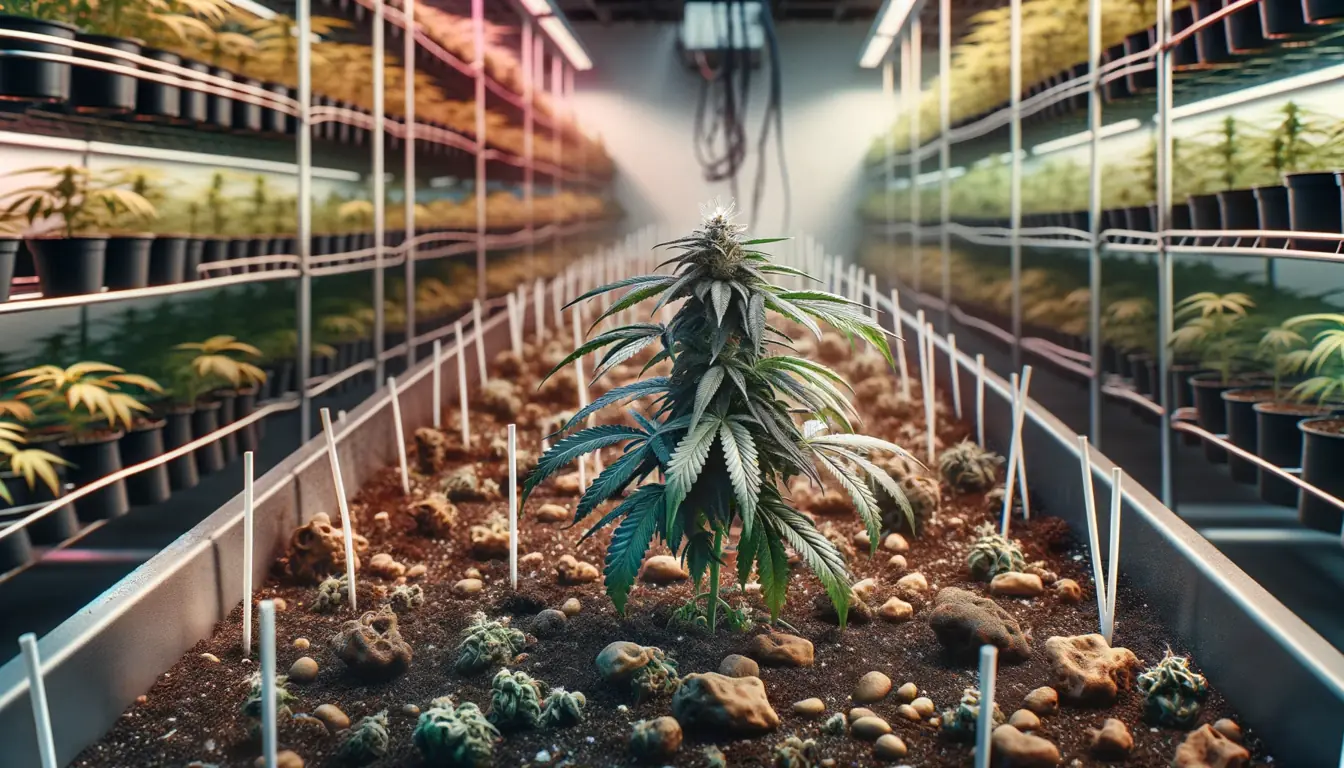
Leaf Abnormalities
Leaf abnormalities, such as unusual shapes, discoloration, or the appearance of single-point leaves, are another common concern during re-vegging cannabis.
Solution: Addressing leaf abnormalities often requires a reassessment of the overall health of the plant. Check for signs of nutrient deficiencies or excesses, and ensure the plant is not under any environmental stress. Adjusting the pH level of the soil or growing medium can also help.
Preventative Measure: Maintaining a stable and suitable environment for the plant is key. This includes monitoring temperature, and humidity, and ensuring the plant is not exposed to contaminants or pests.
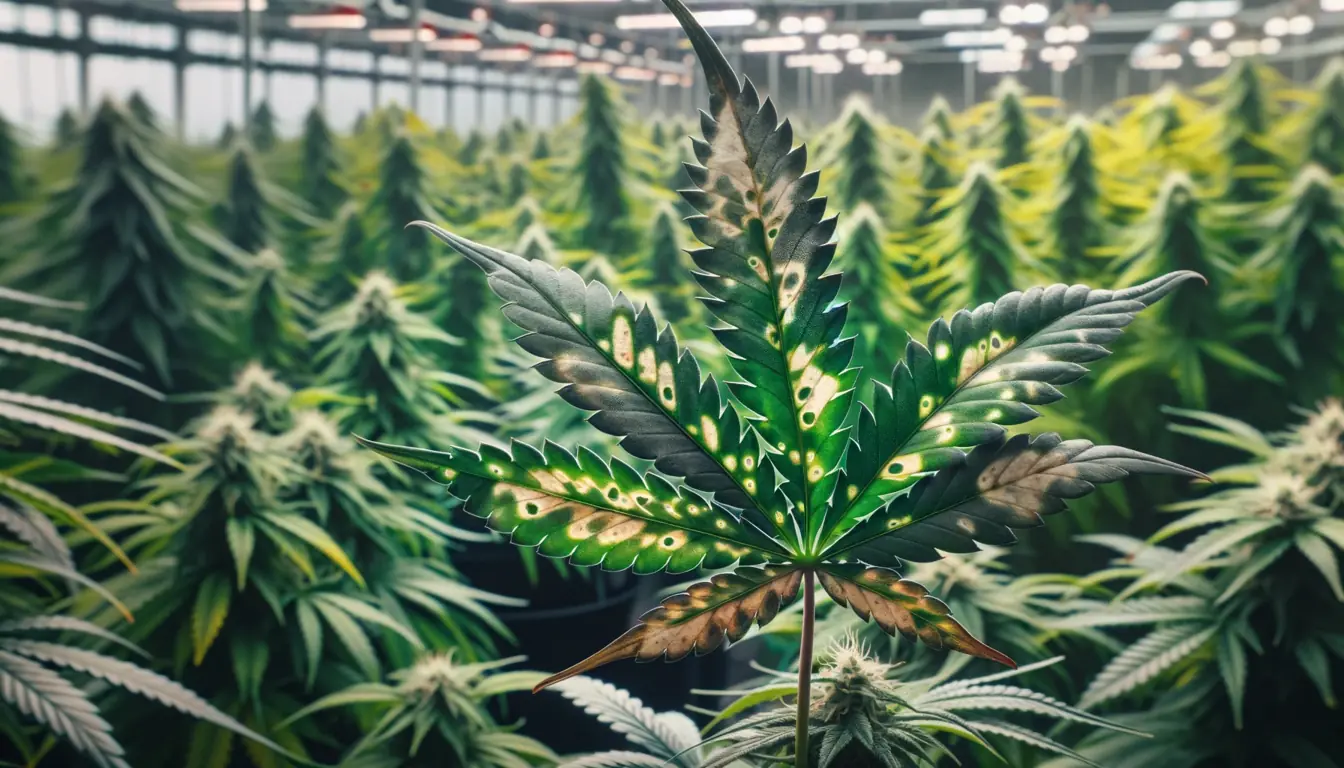
Delayed Re-Vegetation
Sometimes, a plant may take longer than expected to revert to the vegetative stage or show no signs of re-vegetation.
Solution: Patience is crucial as some plants may naturally take longer to respond. However, if the delay is significant, revisiting the light cycle settings can be beneficial. Ensuring the plant is not under any stress and providing a stable growing environment can also aid in speeding up the process.
Preventative Measure: Before beginning the re-vegging process, ensure the plant is healthy and well-suited for re-vegging. Some strains may respond differently to re-vegging cannabis, so understanding the characteristics of the specific strain can be beneficial.
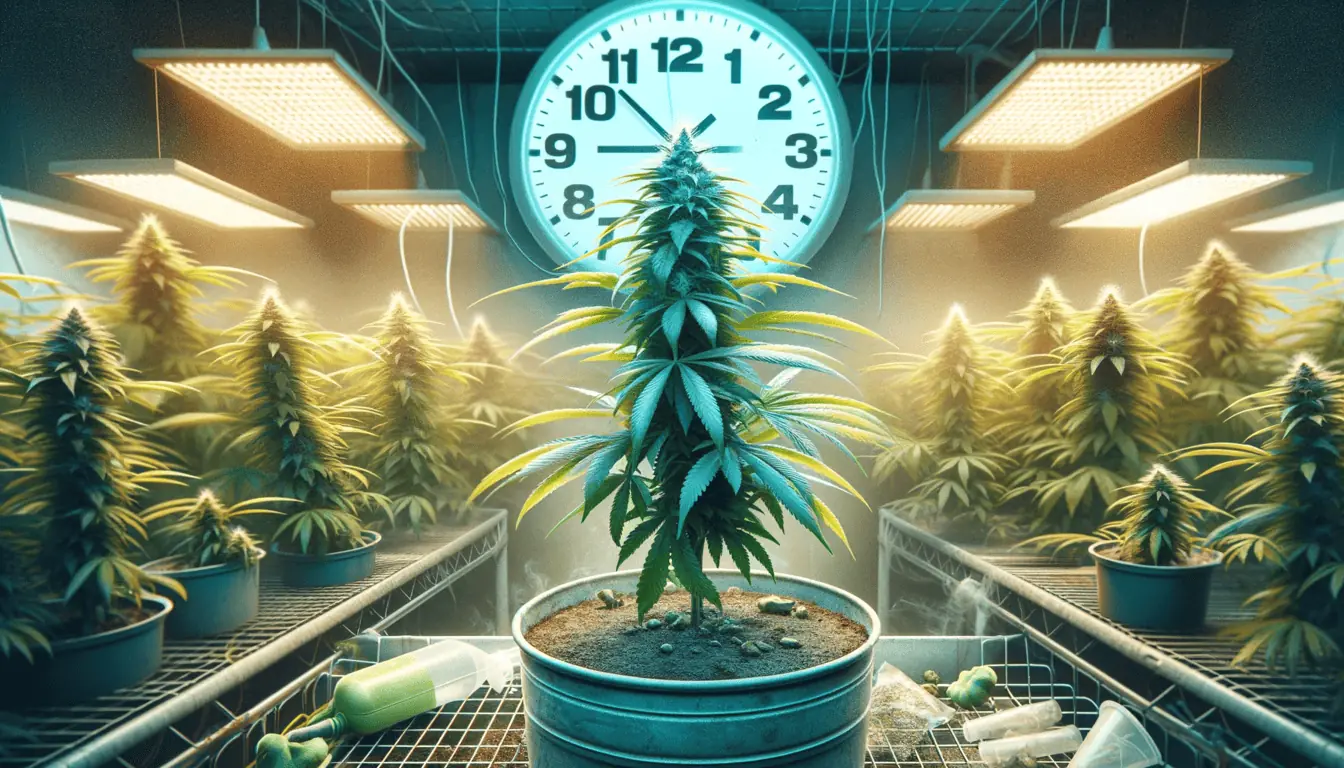
Tips and Tricks from Experienced Growers
Experienced cultivators often have a wealth of knowledge when it comes to troubleshooting re-vegging cannabis issues. Their practical advice is gleaned from years of hands-on experience.
- Tip for Stunted Growth: One grower suggests the use of root stimulants or beneficial microbes to encourage root development, which in turn can support healthier vegetative growth.
- Tip for Leaf Abnormalities: Another common piece of advice is to ensure a gradual transition in the light cycle and nutrient changes to prevent shocking the plant, which can lead to leaf abnormalities.
- Tip for Delayed Re-Vegetation: An experienced grower recommends a careful balance of light intensity and duration, emphasizing that too much light can sometimes be as detrimental as too little.
Troubleshooting the common issues encountered during re-vegging, cannabis requires a combination of knowledge, observation, and adaptability. By understanding the plant’s needs, creating a stable environment, and applying the practical advice of experienced growers, cultivators can effectively navigate these challenges and ensure a successful re-vegging process.
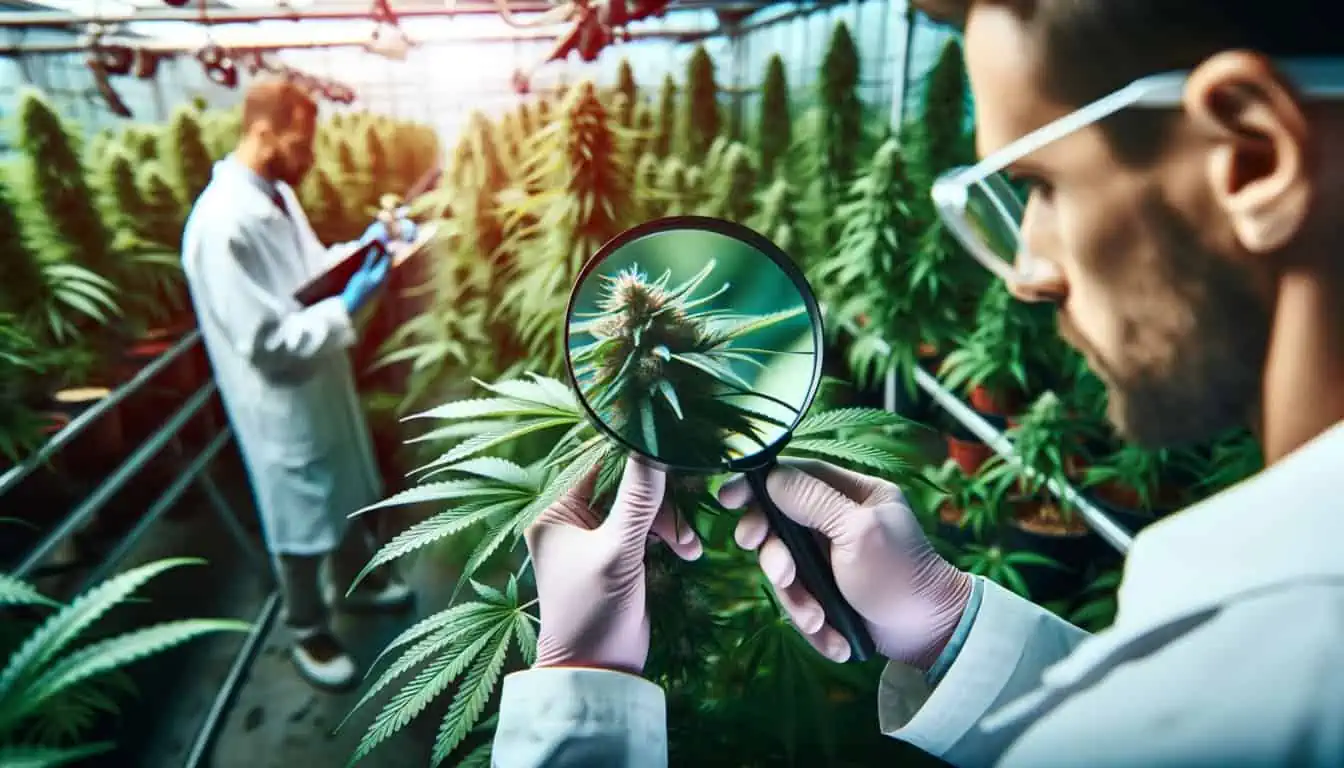
Conclusion
Mastering the art of re-vegging in cannabis cultivation is a journey that blends scientific understanding with practical experience. This comprehensive exploration of re-vegging has delved into various facets of the process, from the fundamental principles and techniques to the troubleshooting of common issues. It’s clear that re-vegging, when executed correctly, offers a plethora of benefits, including multiple harvests from a single plant, preservation of desirable genetics, and enhanced resource efficiency.
Through the insights of seasoned growers and detailed case studies, we’ve seen how re-vegging cannabis techniques like monster cropping can lead to robust plant growth and increased yields. However, these techniques come with their own set of challenges, such as the risk of plant stress, the complexity of nutrient management, and the need for precise environmental control. The success of re-vegging cannabis is not just in its execution but also in the ability to adapt to the unique responses of each plant.
The common issues of stunted growth, leaf abnormalities, and delayed re-vegetation highlight the need for careful observation and a responsive approach to cultivation. Solutions and preventative measures for these issues underscore the importance of a deep understanding of plant physiology and environmental factors.
As we conclude, it’s evident that re-vegging cannabis is more than a cultivation technique; it’s a testament to the grower’s skill, patience, and adaptability. The knowledge gained from this guide provides a foundation for successful re-vegging, but the true mastery lies in the application of this knowledge, combined with ongoing learning and adaptation to the ever-evolving nature of cannabis cultivation.
In embracing the complexities and nuances of re-vegging cannabis, cultivators open themselves to a world of possibilities, pushing the boundaries of what can be achieved in cannabis cultivation. Whether a novice or an experienced grower, the journey through re-vegging is one of continual growth, learning, and an ever-deepening appreciation for the remarkable cannabis plant.

